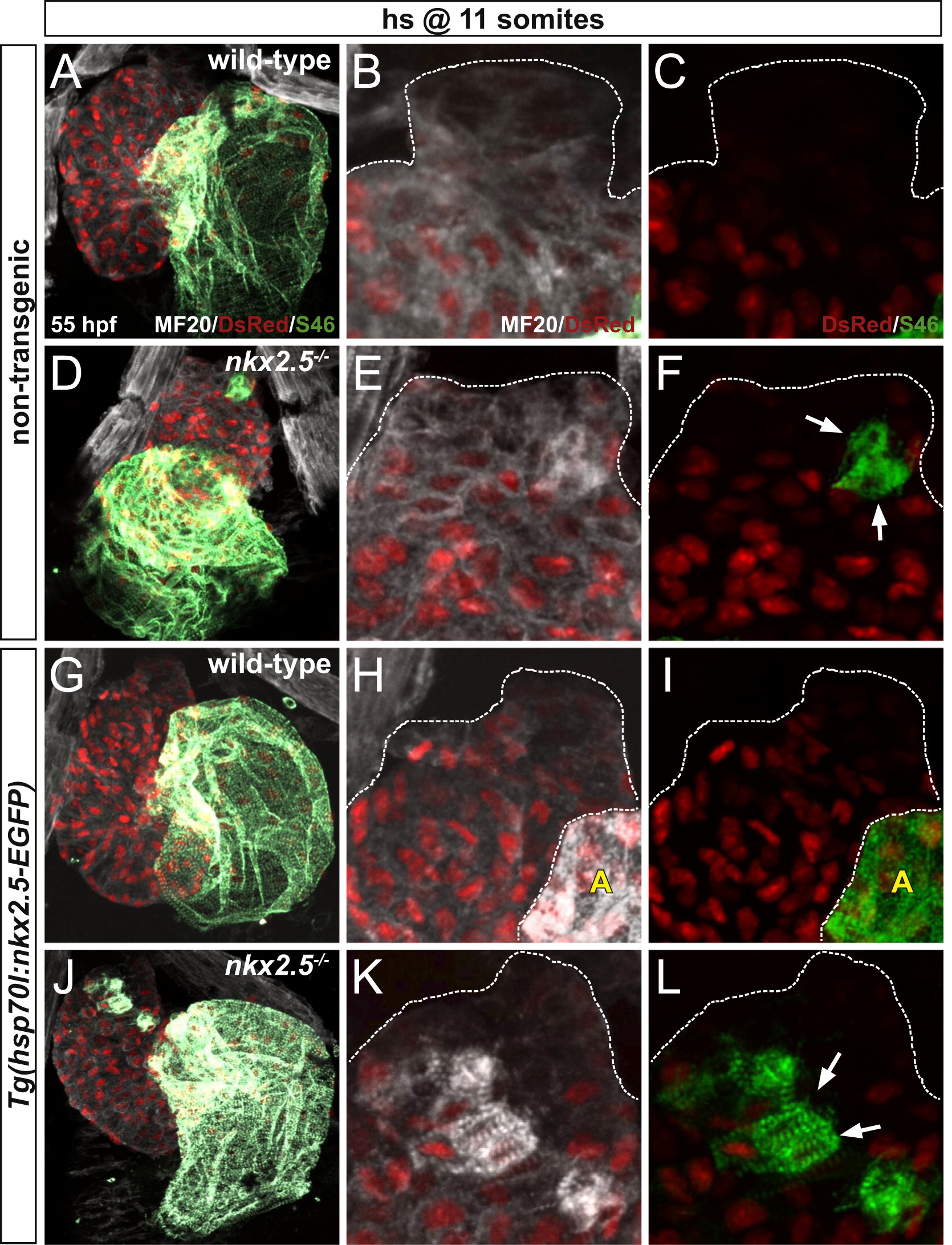Fig. 4
nkx2.5 is necessary to maintain ventricular identity in late-differentiating cardiomyocytes derived from the SHF. MF20/S46 immunofluorescence distinguishes ventricular myocardium (white) from atrial myocardium (green) in non-transgenic (A-F) and Tg(hsp70l:nkx2.5-EGFP) (G-L) embryos. Confocal projections of wild-type (A-C, G-I) and nkx2.5-/- (D?F, J?L) hearts depict cardiomyocyte nuclei with Tg(-5.1myl7:nDsRed2) (red). Ventral views, arterial pole to the top, at 55 hpf. (B,C,E,F,H,I,K,L) White dots outline the MF20+ cardiomyocyte borders in the OFTs of hearts in (A,D,G,J), respectively. White arrows indicate ectopic S46+ cells; ?A? denotes atrium. All embryos were heat-shocked at 11 somites. (A?C) In wild-type non-transgenic hearts, the late-differentiating cardiomyocyte population exhibits MF20, but not DsRed, fluorescence due to the delay in expression of Tg(-5.1myl7:nDsRed2) at the arterial pole. (D?F) Similarly, in non-transgenic nkx2.5-/- hearts, cardiomyocytes expressing MF20, but not DsRed, are present at the arterial pole. A few ectopic S46+ cardiomyocytes are also visualized in this region (DsRed nuclei). (G?I) In transgenic wild-type hearts, MF20, but not DsRed, fluorescence at the arterial pole designates the delayed differentiation of these SHF-derived cardiomyocytes. (J?L) Despite the rescue of the cardiac chamber morphology and identity, excess S46+ cardiomyocytes are visualized at the arterial pole of transgenic nkx2.5-/- hearts where the late-differentiating population accretes (DsRed nuclei).
Reprinted from Developmental Biology, 400(1), George, V., Colombo, S., Targoff, K.L., An early requirement for nkx2.5 Ensures first and Second heart field ventricular identity and cardiac function into adulthood, 10-22, Copyright (2015) with permission from Elsevier. Full text @ Dev. Biol.

